
Pop Standard
“Let It Be,”
the premier single from
The Beatles
album of the same name,
was released on March 6, 1970. More than fifty years on, the
song remains a modern pop standard.
years on, the
song remains a modern pop standard.
Writing a tune with that much staying power is no small feat.
It would be easy to presume that a divine hand guided the
songwriter’s fingers, voice and pen. But chalking up this achievement to a few
moments of heavenly inspiration would be denying credit to the
songwriter’s experience, musical instincts, and craftsmanship.
Sure, the song was hitched to the star vehicle of one of the
best-selling music acts of all time -- The Beatles, and sung by one
of the most beloved voices in pop music history -- that of Sir
Paul McCartney. And that spectacular genealogy didn’t
exactly stunt its growth.
But beyond the song’s royal pedigree, it was a series of creative
judgment calls that ultimately helped it resonate with a universal
appeal. As we eagerly await director
Peter Jackson’s “The
Beatles: Get
Back,” the new documentary filmed at the time of the Let It Be
recording sessions, let’s look at a few of the key decisions about
lyrics, music, instrumentation, and arrangement which culminated in
the creation of a classic.
Composer
Per their
business partnership, Let It Be was credited to
Lennon-McCartney,
the writing team that helped The Beatles sell hundreds of millions
of records worldwide. But in an
interview
with author
David Sheff, Lennon effectively disowned the song, confiding
that was it composed solely by McCartney. Let's start by
examining the lyric.
Title
McCartney’s simple, seven-letter title, "Let It
Be," is imbued with multiple, subtly different connotations.
That interpretive flexibility deserves a lot of credit for the
song’s lasting popularity.
The original title and concept for the album and its accompanying
film was “Get Back” — signaling a return to The Beatles' early
roots, when they recorded songs as a band, with little or no
overdubbing. But soon the the band and producers found
themselves recording additional instrumental and vocal overdubs, so that project title was
scrapped and the emotive power of “Let It Be” won out.
As for the song, the chorus is essentially just those three words,
"Let it be," punctuated with a short, alternating line to keep it
fresh, and to reinforce subtle layers of meaning with each hypnotic
repetition. While
the casual listener won’t think twice about the title, I believe
this flexibility of meaning works on a subconscious level.
By examining three possible translations for the words "Let It Be,’’
we can appreciate how they offer a variety of ways to connect with
masses of listeners who identify with one or more of these
three perspectives. For the purposes of our analysis, we’ll
call them Closure, Hope, and Spirituality.
Closure
*
* To let go of something,
to leave well enough alone, or to put something behind us. The
idea of closure definitely suits The Beatles' swan song album and
accompanying
1970 documentary, as an appeal to a legion of
heartbroken fans to accept the bitter disappointment of their
beloved band's disintegration. And just as a eulogy can
provide solace for the mourners at a funeral, the refrain of “Let It
Be” may have helped some Beatle followers
cushion the blow of dissolution.
Hope **
** To let
something become [to let it be] or to let it happen. The
emphasis here is on avoiding interference, so that a thing can
continue to exist, grow or thrive. While this idea is relatable
outside of the context of The Beatles, it could also apply to the
seemingly endless legacy of the band: Let it be… forever, without
end. Thanks to the periodic release of greatest hits packages, remasters,
remixes and Anthology set, the band’s reputation and influence have strengthened over the decades.
Spirituality ***
*** An
emotional plea with religious roots, about overcoming adversity and
finding answers to difficult situations. In this light, “Let
it be” can be interpreted as an religious interjection or response,
much like "Glory be," "Hallelujah" or "Amen." In fact, the
age-old expression of "Glory be" may have subconsciously paved the
way for our natural acceptance of "Let it be" as a song title, since the two phrases sound so similar. Within a spiritual context, Let It Be is
soulful pop music, moonlighting as Gospel music, ministered by
Preacher Paul.
McCartney stated in a 2018 interview that he wrote "Let It Be" after
a dream visitation from his late mother. Paul had lost his mom
when he was only 14 years old, and in the dream, she was there to reassure
him that everything was "going to be okay, just let it be." In his very first
line of the song, he sings: "When I find 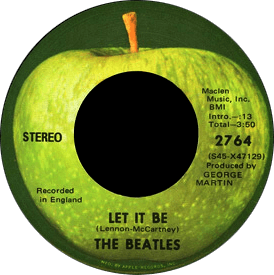 myself
in times of trouble, mother Mary comes to me." On the one
hand, that sounds like a literal reading of Paul's origin story.
But for many listeners, "Mother Mary” is more likely to evoke the holy Mary,
mother of Jesus.
myself
in times of trouble, mother Mary comes to me." On the one
hand, that sounds like a literal reading of Paul's origin story.
But for many listeners, "Mother Mary” is more likely to evoke the holy Mary,
mother of Jesus.
Undoubtedly, Paul was aware of this character double entendre, as evidenced in
the song's deliberately hymnal qualities. You can hear it in
the musical arrangement, which includes a
Hammond L100 organ played by
Billy Preston, and in the
sermon-friendly tag lines: “speaking words of wisdom...” “whisper
words of wisdom...” and “there will be an answer.”
Speaking of spirituality, in the last verse, when Paul sings, “I
wake up to the sound of music,” it's not likely he's talking about a
clock radio. Still, the narrative could be taken literally, as in
someone playing music in another room, or maybe they're watching
"The Sound Of Music" (1965) on TV or listening to its soundtrack.
But more likely, the protagonist is singing about a spiritual awakening or
personal enlightenment.
Whenever I hear a lyric line that could mean multiple things, I like to
imagine that the songwriter came up with the most straightforward
idea first, possibly because (s)he liked the way it sang, and
then realized the possibilities for deeper meaning, as good
songwriters often do.
These three interpretations make “Let It Be” a universally relatable
song title, attracting listeners with different perspectives and
inviting them to attach their own personal meanings. For
songwriters who seek broad acceptance for their music, a title like
“Let It Be” demonstrates the power of versatile meaning.
Structure
The
scheme is comprised of just three song sections: 1) Verse (Intro),
2) Chorus, and 3) Interlude (Outro). The verses appear in groups of two.
The solo section is the same as a double verse. The Interlude
(Outro) is a keyboard break which appears
twice after the second set of choruses and once at the end of the song.
|
Scheme |
Description |
|
Intro |
half a verse, piano only |
|
Verse x 2 |
when I find myself
and in my hour of darkness |
|
Chorus x 1 |
whisper words of wisdom |
|
Verse x 2 |
and
when the broken-hearted
for though they may be parted |
|
Chorus x 2 |
there will be an answer
whisper words of wisdom |
|
Interlude x 2 |
electric piano
organ |
|
Guitar
Solo x 2 |
guitar |
|
Chorus x 1 |
whisper words of wisdom |
|
Verse x 2 |
and
when the night is cloudy
I wake up to the sound of music |
|
Chorus x 3 |
there will be an answer
there will be an answer
whisper words of wisdom |
|
Outro x 1 |
keyboard |
|
|
Tracks
Performed by Paul McCartney
(1970 album release) |
|
Bass |
|
Lead Vocal |
|
Backing Vocal |
|
Blüthner Grand Piano |
|
Fender Rhodes
Electric Piano |
|
Intro
The
song’s introduction features a solo McCartney playing a
Blüthner Model One concert grand
piano, his right hand playing block chords on downbeats.
With his left hand, he plays root notes on
down beats as well as lighter hits on the up beats. For his
fourth and fifth chords, Paul plays a IV Maj 7 chord
(FM7) followed by a IV 6 chord (F6). Whenever I hear someone cover the song faithfully and they leave
that out, it feels like something important is missing.
Verse
Paul
opens his verses by vocalizing across a pentatonic scale in the key
of C Major. As he approaches the title line, he rises once again,
and then resolves downward with a quick series of suspensions on
"speaking words of" (E - E
- F - E), "wis-dom, let it" (E - D, E - D), and
"be__" (D - C). In just a few short lines, we’ve already heard
something special.
Chorus
After another
section of verse, he begins the chorus by returning to that
pentatonic scale, climbing to an even higher note (an A). Then,
recognizing that his title line melody is one of the strongest,
most original and ear-catching parts of the song, Paul wisely makes
it a callback in the choruses as well. The chorus covers a
span of nine scale tones. That's a lot of musical ground!
He begins on E, moves down to C, then rises up to an "A,"
then spins down to a G below tonic, before jumping up a 6th, to the
E where he started.
There's a lot of movement, but it's still easy to remember and sing.
These are signs of a memorable melody.
Interlude
/
Outro
A good
way to explain the familiar allure of the interlude chord
progression is to have you listen to the ending of a
George Harrison song called “Piggies,”
from “The Beatles” (a.k.a. "The White Album”). Piggies
concludes with a tag ending, culminating with a grandiose
“Amen” suspension and resolution (4 - 3 - 2 - 3). Music theory aside, if
you’ll listen to it, you’ll probably recognize the chord changes,
which you may associate with an “Amen,” as it might be sung in
church.
Let It Be's majestic electric piano break (played in an overdub by
Paul), is based on that Amen
chord progression, but with four important twists.
1) It
*starts* with the Amen progression, rather than ending on it.
2)
Instead of that single “Amen,” it keeps descending downward, so it’s
like playing three “Amens” in a row.
3)
Diatonic, third-above harmonies are added to the descending notes.
So now, instead of F - E - D - E, we have F - E - D - C (with
white-key thirds above). Notice that because of the added
thirds, the Amen notes are
still in there.
4) One of
the best parts of that progression is his fifth chord (immediately
after the opening Amen suspension). This B flat chord (a chord
built on the flatted seventh note of the scale) is the only
non-diatonic chord in the bunch.
With
these simple changes, the inventive motif delivers the gravitas of
the Amen suspension, in a way that sounds fresh and not
appropriated.
Try
playing nine descending scale tones starting on F, like this: F,
E-D-C, B-A-G, F, E. Now add a white key third above each note.
Something's missing, right? Now change the "B" to a "B flat"
(keeping all white-key thirds above it): F, E - D - C, Bb - A - G, F, E.
*There's* the magic.
The keyboard break really takes wing when it repeats a second
time, as the other instruments make way for Billy Preston’s angelic
organ. During this drastic change of timbre, he inverts the chords for an uplifting
and emotional impact, as we segue into the guitar solo with some bluesy gospel chords..
Arrangement
DRUMS:
Ringo Starr’s
minimalist, foot-closed high hat enters quietly with the second
verse on beats two and four. Phil Spector added a nice delay
to this on his album mix. For the choruses, Ringo uses
syncopated pings on the cymbal bell to great effect, and a patterned
tom part (as opposed to tom fills) to create excitement in the last
few verses. Ringo's tom part reminds m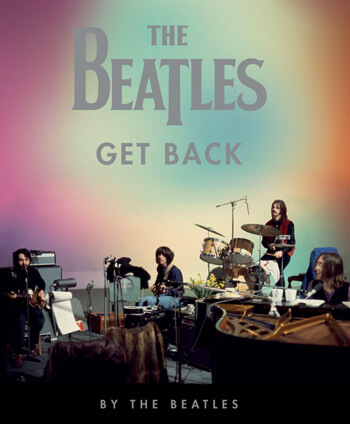 e of the one he played on the bridge to George
Harrison's "Something," on the
Abbey Road album.
e of the one he played on the bridge to George
Harrison's "Something," on the
Abbey Road album.
BASS:
Although John Lennon did record a 6-string bass track with the band,
producer George Martin asked Paul to record a new bass line afterward.
Paul's bass enters unexpectedly — one note into the Amen chord
sequence which separates the second set of verses. Despite the
fact that it joins the piano in mid-phrase, the late entrance feels
right.
GUITAR: George’s Harrison’s guitar solo on the "Let It Be" single and on
the "...Naked" and "1" albums is the most pedestrian contribution to
the song. Despite a cool guitar sound, having been run through
a rotating Leslie speaker, the take is meandering and uninspired.
Luckily,
the gutsier solo which was recorded for the original album in a
later take is great, especially on the high "A" note, where the solo
peaks. (This is also McCartney's highest-sung vocal note, the
sixth of the scale). And if you listen carefully, you'll hear
that George's earlier solo is mixed beneath it in a supporting
layer, making it much more effective.
The beefy riff before “I wake up to the sound of music” is
a highpoint. And the guitar fills over the last
choruses are also nice.
BRASS:
A brass section (two trombones, two trumpets and a tenor sax) plays
a descending-scale in harmony with the bass line during the later
choruses. When the horns hold the 7 of the scale (B) there is a
pleasant tension with the tonic note, C, which is played against it.
VOCALS: Filling out the sustained
horn and organ parts on the album recording are some possibly
inaudible cellos, as well
as some high "ooh" backing vocals, sung by John and George, and
bolstered with overdubs by George, together with Paul &
Linda
McCartney. According to Beatles authority Mark Lewisohn, this
is Linda's first and only music performance on a Beatles
recording.
Making
It Look Easy
Paul McCartney enthusiasts
tend to fawn over his reputation for a swift and effortless
writing process. But once you dig into the Beatles archives
and books about the minutiae of their recording sessions, you’ll
find that quite a bit of thought, re-writing, experimentation,
arranging, producing ideas, collaboration, and multiple recorded takes helped craft
some of Paul’s best music, too.
McCartney’s melodic mastery has been demonstrated time and time
again, not only in his vocal melodies, but also in his guitar parts
and bass lines. The man certainly has an ear for what people
want to hear.
And in
the end... aren't musical instincts really just harmonic
empathy?
--
Dave Caruso
Special thanks to:
Callaway Arts & Entertainment for their kind permission
to use
The
Beatles: Get Back
book cover photo
John Lowry
for his research and enthusiasm
Rob Caruso for his insightful discussion and ideas

| |
Album |
Artist |
Producer |
Song |
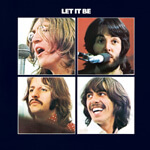 |
Let It Be
(1970) |
The Beatles |
Phil Spector |
Let It Be
(Original album version)
This recording contains the overdubbed keyboard break (outro), the
horn section, additional backing vocals by George, Paul and
Linda McCartney, and a better, more gutsy guitar performance from Harrison. |
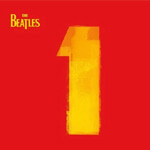 |
1
(2000) |
The Beatles |
George Martin |
Let It Be
(Remixed & remastered version)
For comparison, I've included links to a few other versions of
the song, which were based on two band takes, with different
additional instruments, solos, and production. The
"number 1" album version is the same as the original Beatles
single. |
 |
Let It Be...
Naked
(2003) |
The Beatles |
George Martin,
The Beatles |
Let It Be
(Naked version)
Having scrapped mixes by engineer Glyn Johns, the band's tapes
were given to Phil Spector for mixing. Paul, for one,
was never happy with that decision. In 2003, the band
released this "naked" version, without the ornamentation added
by Spector. |
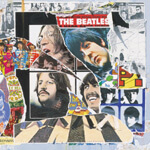 |
Anthology 3
(1996) |
The Beatles |
George Martin |
Let It Be (Anthology 3
Version)
A rehearsal version, in which you can hear John playing the
kind of lackluster bass part which was deemed insufficient by George
Martin and subsequently replaced by Paul. |
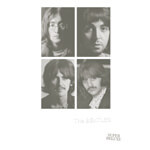 |
The Beatles / The ‘White Album’
50th anniversary super deluxe edition
() |
The
Beatles |
|
Let It Be - Unnumbered Rehearsal
(disc 5).
This take is from a rehearsal during The Beatles / The White
Album sessions. |
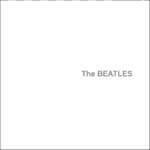 |
The Beatles
(a.k.a. The White Album)
(1968) |
The Beatles |
George Martin |
Piggies
(by George Harrison)
Check out the false endings on this George Harrison
tune and notice the "Amen" chord progression on the final
ending, as it pertains to our discussion. |
 |
Abbey Road |
The Beatles |
George Martin |
Something (by George Harrison)
I included this link so you can compare Ringo's patterned tom
fills on the bridge of this song to those on the chorus of the
song Let
It Be, on the original Let It Be album release. |
Let It Be

Music & Lyrics by Lennon-McCartney
When I find
myself in times of trouble, Mother Mary comes to me
Speaking words of wisdom, let it be
And in my hour of darkness she is
standing right in front of me
Speaking words of wisdom, let it be
Let it be,
let it be
Let it be, let it be
Whisper words of wisdom
Let
it be
And when the
broken hearted people living in the world agree
There will be an answer, let it be
For though they may be parted, there
is still a chance that they will see
There
will be an answer, let it be
Let it be,
let it be
Let it be, let it be
Yeah, there will be an answer
Let it be
Let it be, let it be
Let it be, let it be
Whisper words of wisdom
Let
it be[Solo]
Let it be,
let it be
Let it be, yeah, let it be
Whisper words of wisdom
Let
it be
And when the
night is cloudy there is still a light that shines on me
Shine until tomorrow, let it be
I wake up to the sound of music,
Mother Mary comes to me
Speaking words of wisdom, let it be
Let it be, let it be
Let it be, yeah, let it be
There will be an answer
Let it be
Let it be, let it be
Let it be, yeah, let it be
There will be an answer
Let it be
Let it be, let it be
Let it be, yeah, let it be
Whisper words of wisdom
Let
it be
|
